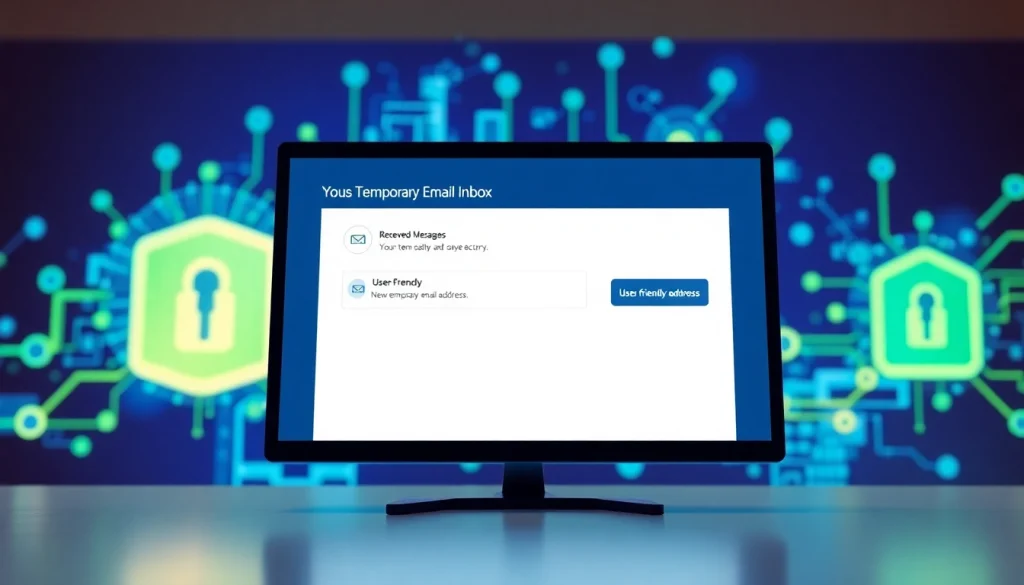
Understanding Temporary Email
What is Temporary Email?
Temporary email, often referred to as disposable email, is a service that enables users to receive emails at a non-permanent address designed for short-term use. Users create these addresses to maintain anonymity and protect their primary email accounts from spam and unsolicited inquiries. Unlike traditional email accounts, temporary emails can self-destruct after a certain period or after they’re accessed, making them an excellent choice for those who wish to keep their digital footprints minimal.
Benefits of Using Temporary Email
The benefits of using temporary email are extensive. Firstly, it enhances privacy — by utilizing a temporary email address, users can protect their primary email from becoming overwhelmed with unwanted spam. Secondly, it provides a layer of security, as these addresses are often used for one-time registrations and do not link back to the user’s identity. Lastly, managing multiple temporary email addresses can help streamline various online registrations and activities, making it an attractive option for users who frequently engage in web signups or trials.
Common Use Cases for Temporary Email
Temporary email services are particularly useful in several scenarios:
- Online Registrations: When signing up for new websites or services, especially those requiring email verification.
- Trial Runs: For users interested in testing services that require an email for access without commitment.
- Privacy Protection: Safeguarding personal information when accessing forums, contests, or other platforms where privacy concerns may be high.
- Preventing Spam: Avoiding flood of unwanted emails after making purchases or signing up for newsletters.
Getting Started with Temporary Email
How to Create a Temporary Email Address
Creating a temporary email address is often a straightforward process. Here’s a general step-by-step guide:
- Choose a reliable temporary email service provider.
- Visit the website and navigate to the address creation section.
- Some sites may require you to click a button to generate a random temporary email address; others might allow you to customize it.
- Copy the generated email address and use it for your immediate needs.
- Check your temporary inbox for incoming emails. Most services will provide a simple interface to read messages received.
Choosing the Right Temporary Email Service
Selecting the right temporary email service provider is crucial for a seamless experience. Here are some considerations when making your choice:
- Reliability: Ensure the service has a good track record for uptime and email delivery.
- User Interface: The platform should have an intuitive layout that makes navigation simple.
- Mailbox Duration: Check how long the temporary email address remains active and when it self-destructs.
- Privacy Policy: Review the provider’s policy to understand how your data is handled.
Step-by-Step Guide to Using Temporary Email
Once you’ve chosen a temporary email service and created an address, using it effectively requires a few straightforward steps:
- Use your temporary email for account registrations or subscriptions where you want to minimize spam.
- Access the temporary mailbox periodically to view messages. Depending on the service, these may be available through a web portal or a mobile app.
- If verification is needed, follow the email link directly from your temporary inbox.
- After using the email for your purpose, you can let it expire or delete it if you wish.
Best Practices for Using Temporary Email
Maintaining Privacy and Security
Maintaining privacy and security is paramount when using temporary email addresses. Users should:
- Avoid providing personal information to sites if not necessary.
- Regularly check the settings of your temporary email service to ensure no tracking or usage data is being shared.
- Log out of your service when finished, especially on shared devices.
When Not to Use Temporary Email
While temporary email addresses have their advantages, there are specific scenarios where they may not be appropriate:
- For important communications — avoid using temporary emails for crucial correspondence.
- If account recovery is vital, opt for a permanent email that can receive security notifications.
- When creating accounts that require identity verification; some services may restrict the use of disposable addresses.
Managing Multiple Temporary Email Addresses
Many users find it beneficial to manage several temporary email addresses at once. Here are some strategies:
- Labeling: Use unique labels when creating emails for different purposes to keep track.
- Organization: Maintain a digital notebook or spreadsheet to log what emails were created for which service or purpose.
- Regular Cleanup: Periodically review and delete any unnecessary or unused addresses to minimize clutter.
Temporary Email vs. Permanent Email
Key Differences Between Temporary and Permanent Email
Understanding the core differences between temporary and permanent email addresses can significantly impact how you handle online interactions:
- Duration: Temporary emails are short-lived, while permanent emails are long-lasting.
- Functionality: Permanent emails are designed for loyal communication, whereas temporary emails serve specific, often one-off needs.
- Identity Link: Permanent emails typically link back to your identity, while temporary emails provide anonymity.
When to Use Each Type
The choice between temporary and permanent email depends on the context:
- Use Temporary Email: For subscriptions, sign-ups, and services that may overwhelm you with promotional emails.
- Use Permanent Email: For ongoing conversations, secure communications, and situations where you require access to account recovery processes.
Combining Both for Better Online Management
Utilizing both types of email addresses can be highly beneficial:
- Use your permanent email for essential communications and account management.
- Engage with temporary emails for less critical interactions to limit exposure to spam.
- This dual strategy enhances organizational efficiency and protects your primary accounts against unsolicited emails.
Future of Temporary Email Services
Trends in Temporary Email Usage
As digital communication continues to evolve, the use of temporary emails is expected to grow. Privacy concerns and spam reduction will drive more users toward disposable email solutions. Consequently, advancements in technology and user experience will likely enhance the functionality of these services, attracting a broader user base.
Technological Innovations in Temporary Email
Innovations such as AI-driven spam detection algorithms and improved security protocols are poised to transform temporary email services. Additionally, integration with mobile applications and user-friendly interfaces will make it easier for users to adopt these tools into their digital routines, ensuring they become a fixture in online privacy management.
Expected Developments and Consumer Preferences
Consumers are increasingly opting for services that promise simplicity and robustness. As temporary email services innovate, they will likely emphasize user privacy, security, and ease of use. Future developments may also include features like automated email sorting, enhanced usability across devices, and expanded durations for email retention, catering to the sophisticated needs of modern users.



